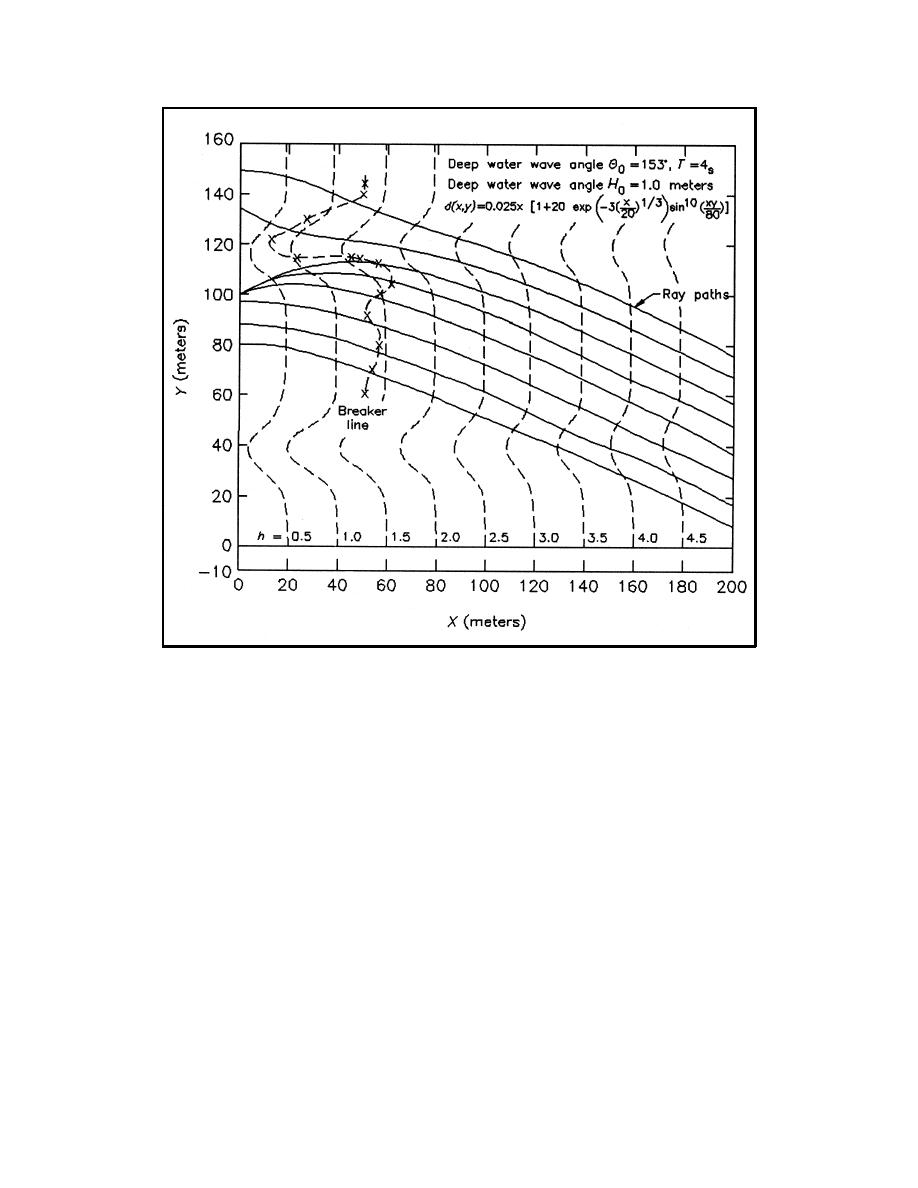
EM 1110-2-1100 (Part II)
30 Apr 02
Figure II-3-7.
Highly regular bathymetry but undulatory contours
of the wave crest nearer shore is in deeper water than the part of the wave offshore and is hence moving
faster). If the combination of wave angle of approach to the bathymetry and wave period is correct, the wave
will turn back and go offshore, giving the appearance of a reflected wave. Calculation of wave heights where
waves crook or bend backwards is not treated here.
e Wave diffraction. Wave diffraction is a process of wave propagation that can be as important as
refraction and shoaling. The classical introduction to diffraction treats a wave propagating past the tip of a
breakwater. Since diffraction theory is most often applied to the interaction of waves with harbor structures,
derivation of wave diffraction is deferred until Part II-7 (Harbor Hydrodynamics). Any process that produces
an abrupt or very large gradient in wave height along a wave crest also produces diffracted waves that tend
to move energy away from higher waves to the area of lower waves. So initial wave energy is reduced as
diffracted waves are produced. However, if the rate of convergence is too great, the wave may still break.
f. Reflection. Waves that propagate into a solid object such as a breakwater, a seawall, a cliff, or a
sloping beach may reflect. In the case of a vertical, hard structure, the fraction of wave energy reflected can
be large. For permeable structures or gentle slopes, the reflection will be much less. For nearshore wave
propagation problems, reflections are usually ignored because the reflected wave may often be less than
10 percent of the incident wave.
II-3-16
Estimation of Nearshore Waves


 Previous Page
Previous Page
